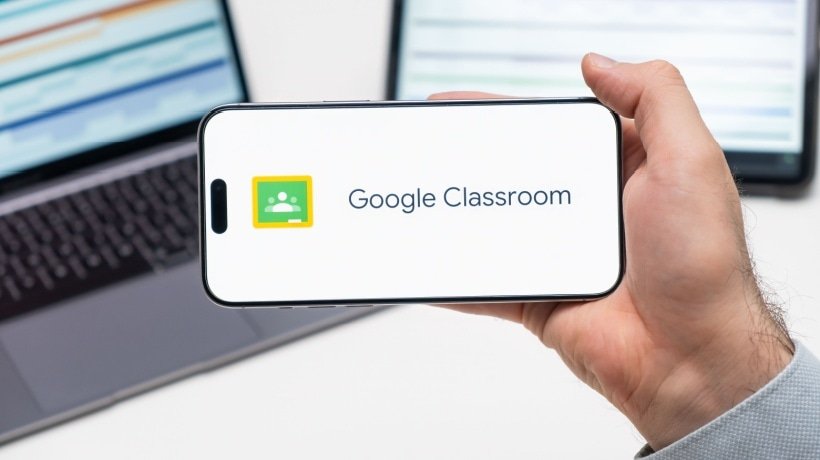How To Turn Google Services Into A Peer Review Paradise In 6 Steps
Given the importance of it, peer group needs a careful planning and consideration to harness its potentials; if misplanned, it is likely to produce a counter effect in terms of the expected results. Keeping that in mind, and for the sake of mitigating the possible damage of an unprepared peer group lesson, let me propose the following 6 steps, along with some apps and add-ons, that can accompany you in this process. By giving this process the power of recursivity, teachers can also save valuable time which they can spend on providing students with more qualitative and quantitative informed feedback.
1. Collection Of Data About Students
This first step includes on-the-spot questionnaires, pre-surveys, and focus groups with the related stakeholders, including previous teachers of the same course you’re teaching (if possible), current teachers of other courses, administration, parents, and of course students. This will arm teachers with preponderant power, namely data, and this will certainly allow these "ninja" teachers to build sound data models and portfolios of each stakeholder to fathom their inter-relations with students. Therefore, they give a room for more accurate ex-ante evaluation of possible misturns of learners. An extra bonus of conducting a data collection is the incredibly real-like assessment teachers will have in their hands and the basis of deploying a needs assessment analysis. Google offers one of the most reliable tools to do this job, which is Google Forms. There, you can design questionnaires and send them out to stakeholders so they can fill them out online. Google Forms service, also, presents this collected information into nice collected data that are ready for you delve in and dissect.
2. Analyze The Collected Data Into Manageable Chunks
If you think that summary responses that come along with Google Forms don’t satisfy your purpose, you may want to link it beforehand to a Google Sheets, and that is where you can conjure up many wonders. Based on that, and in order to get most out of the data gathered from students to exploit it and turn it into a live creature full of potential, Google Sheets is really a handy tool that can do the job for you. As a quick reminder, Google Sheets is an online version of Excel but it comes with hundreds of add-ons you may use for different purposes.
In this step, you can use it to interact with students and the information they have typed in. You don’t need to be a guru (I’m not either) in data analysis to chunk these data, yet you need to set up your goals and carefully craft them so you don’t wander too much in this vast world of data analysis. You will be only giving commands to Google Sheets to draw graphs related to, to mention few, their age range, location, interests, preferred websites, and social media hubs, preferred time of the study, etc.
By the end of the data analysis, the teacher should be able to roughly recognize patterns and feasibility of peer group within and among learners. A teacher can also harness the power of Google Sheets with extra perks, namely add-ons, that will empower his grab of data. What I usually use for that step are the following nice add-ons:
- Yet Another Merge.
To send students a personalized automated email, to know whether they opened the email, and how many times. - FormMule.
To send an automated personalized email upon each submission via Google From from students.
3. Choose The Best Approaches And Tools For Peer Group
It is really crucial to variate peer group activities that would engage students in a more collaborative environment between them and the outside world. One of the best approaches that may pay off with peer groups is project-based approaches, evidence-based approaches, and case studies. These, if planned perfectly, aligned with learning objectives and related to real-world problems, will really bring students’ drive to a higher level since they will be working on something that can change their word and worlds. There are many online platforms that allow for peer group but it would be better to bring them into one service that offers a wide range of options without needing to jump back and forth between the latter.
I would argue that Google Documents may be a good choice for a busy teacher thanks to its robust foundation and its possibility to expand beyond what it already offers. There are hundreds of add-ons that you can install on your Google Document to make your life and that of students easy. Here are some of the favorite add-ons I use very often:
- DocSecrets.
To hide specific content from students. This is particularly useful to some extent when you want students to conduct an anonymous peer review of their fellow classmates. - HighlightTool.
To create a color based editing system where you assign each type of mistake a color and label it at the same time. - Plagiarism scanner.
This is a simple tool to check the authenticity of the content that can be used both by the teacher and the student at the same time. - WriteWell for Google Docs.
This add-on offers a wide range of templates that either a teacher or a student may consider using as a basis to get a head start without having to looing through enormous research results provided by search engines.
4. Pilot Your Work
What we plan, and foresee to do, might not be realized the way we hoped. For this reason, piloting the prototype of peer work activity is nice to practice because it will allow the teacher to identify possible gaps in their activity and amend what needs more crafting. An easy way to make sure that everything will be on track is to model peer groups using the aforementioned steps with the suggested tools and walk students through these phases. You may even go further and create a sample peer group of an article with students, as an example, while keeping in mind the oldie goldie saying: "Tell me and I forget, teach me and I may remember, involve me and I learn".
5. Apply With Caution
After the piloting-stage is over, and the peer group has been deemed affordable and reliable, it's time to apply the archetype, but with caution! Keep a constant monitoring of students’ understanding of all phases, and act as a facilitator. It is likely that, as a teacher, you will run through some technical as well as procedural issues, and you are likely to find a solution for them quickly if you have done your homework of prediction, or else an analysis of the data of the previous steps, well.
6. Update Constantly
It doesn't help to stop at your laurels. A good and wise teacher would rather keep digging for better applications and practices on a constant basis since the knowledge of today may be prone to obsoleteness tomorrow.
Finally, Fail Better
Don’t be bogged down if things don’t or didn’t go as you expected since it’s only a step of a thousand mile trip. And remember; Rome was not built overnight. Reaching the desired state of affairs is actually an accumulation of false starts and of half successes. In other words, the more you go through trial and error, the more your skin gets thicker, and the more spotting glitches become a second nature to you, the better. For a peer group to succeed, the teacher should be like a gladiator. In other words, they should never back down because of the possible sea of troubles. They should be open to new updates, armed with an ability to explore new lands of tools that are being created on a regular steady basis in the field of education. Now, you can abide peer group, Google services, and growth mindset… but, please, remember: The most important one is growth mindset!







